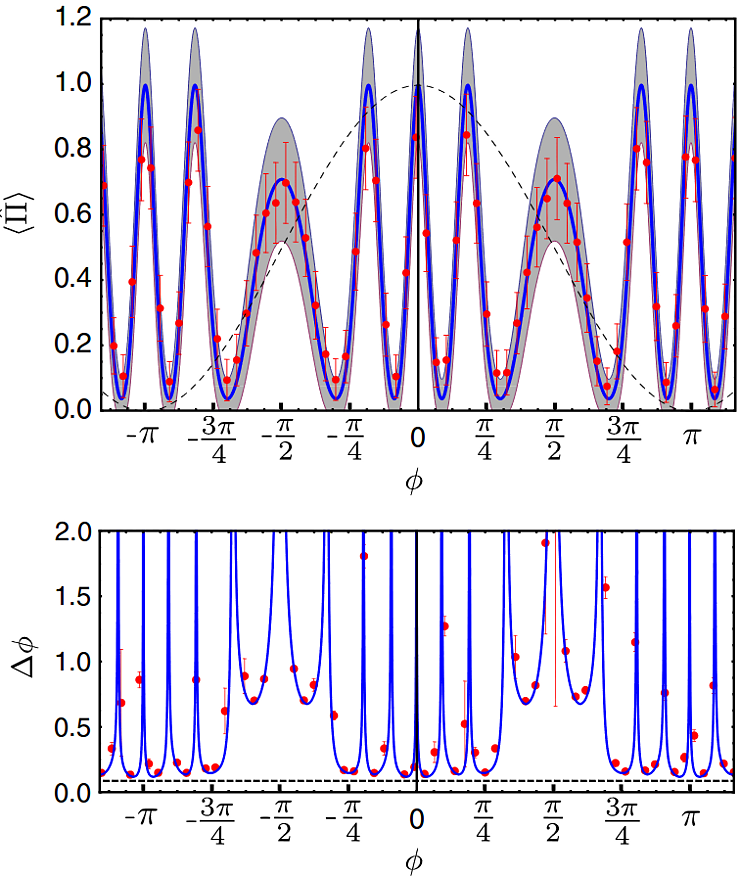When phase sample is explored or a length is measured by an optical interferometer, the question arises: what is the ultimate resolution of such measurement? In other words, how many fringes can you have within one period and how good the signal to noise ratio could be? In collaboration with group of Ulrik Andersen in Lyngby, we have answered this question for the simplest case where only classical light and classical measurement are used [Phys. Rev. Lett. 111, 033603 (2013)]. Surprisingly, you can get unlimited number of fringes withing one wavelength using only classical resources (without entangled NOON states or photon-number resolving detectors). And because the protocol is deterministic as opposed to probabilistic preparation or measurement, the sensitivity scales according to the standard quantum limit. The experiment was done at DTU Physics in Lyngby.



